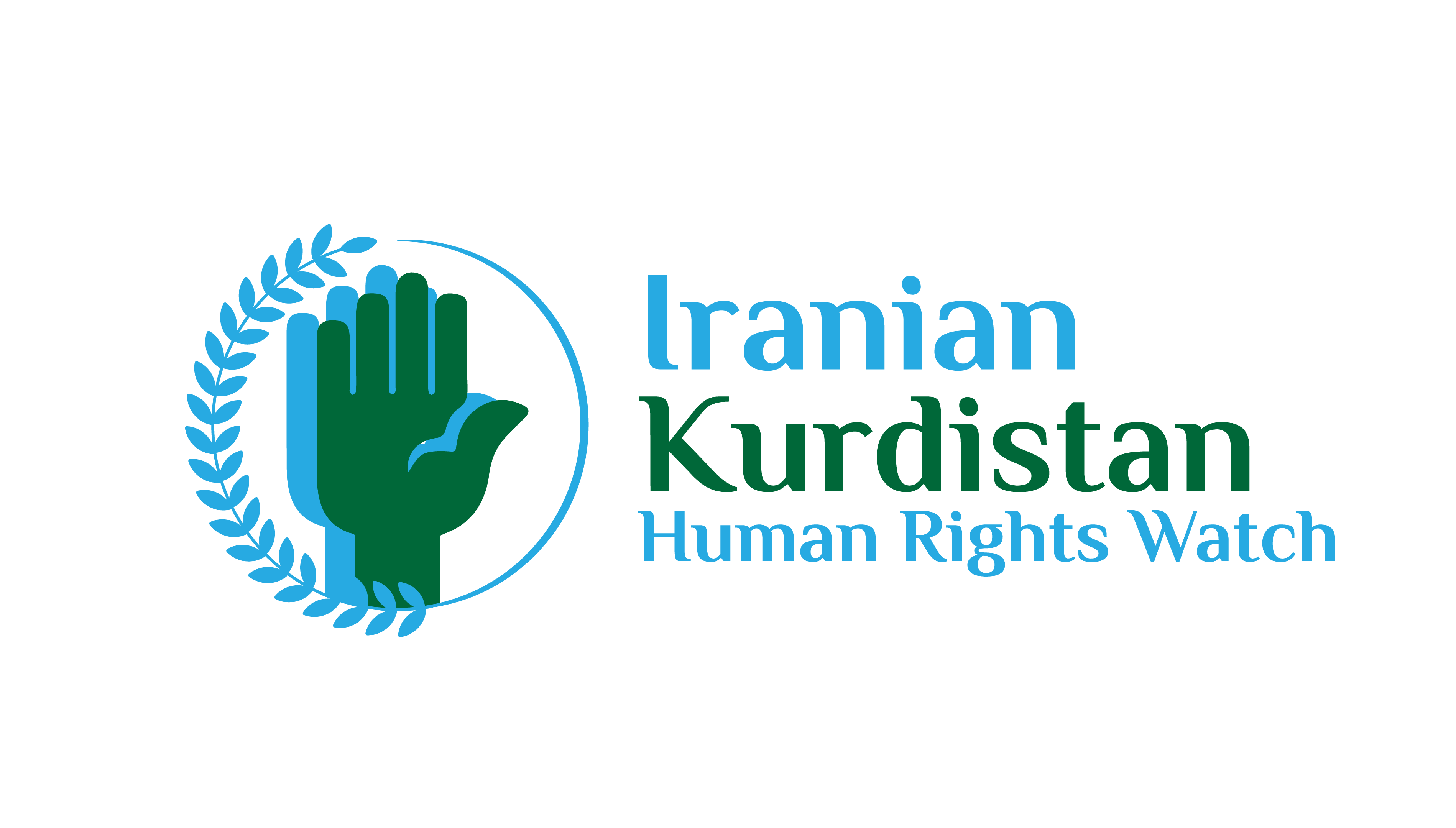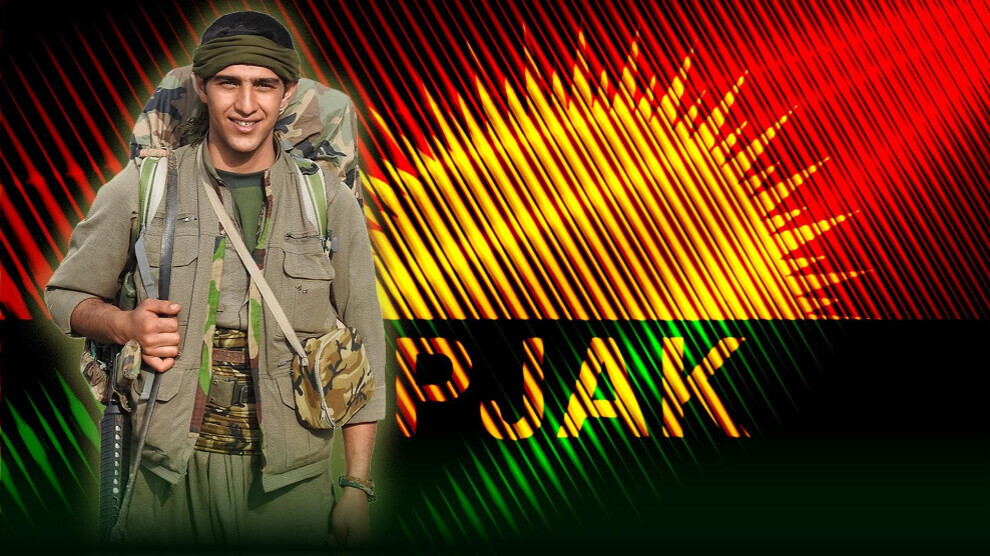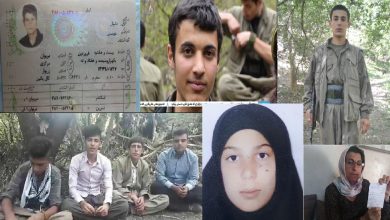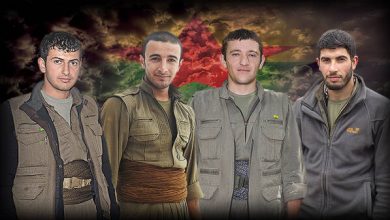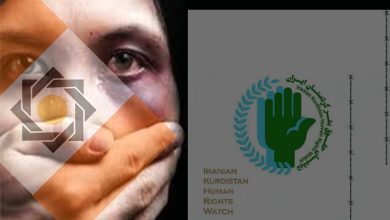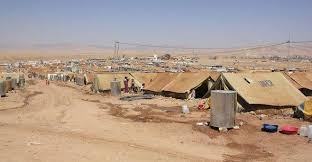The child who never returned home; Omid Hosseini, a 16-year-old teenager from Kamyaran, became the latest victim of the inhumane policies of the PJAK group. While international conventions consider the use of children in armed conflicts a war crime, PJAK and the PKK, in blatant disregard of these obligations, continue to send Iranian Kurdish teenagers to war and their deaths. The tragic story of Omid’s death is just one example among hundreds of lost child soldiers who are sacrificed in the shadow of extremist ideologies and the global community’s silence.
By Iranian Kurdistan Human Rights Watch – Dr. Zana Sadeqi
Penjwen, Iraqi Kurdistan – July 2025
The official media of the PJAK paramilitary group, affiliated with the PKK, recently announced the death of one of its members, Simko Kobani (real name: Omid Hosseini). Omid, a 16-year-old from Kamyaran, was, according to PJAK itself, recruited by the group years ago at a young age and subjected to specialized military training.
PJAK’s report attempts to craft a heroic narrative around the death of this Iranian Kurdish teenager, yet it is rife with documented evidence that contradicts this image. It confesses that Omid entered the ranks of PJAK paramilitaries before reaching the legal age. After receiving “sniper training” and engaging in other military activities, he was dispatched to the Iranian border mountains for armed operations.
A Grave Violation of Children’s Rights
Under international law, the use of children under 18 years of age in military activities, especially armed conflicts, is a serious breach of humanitarian principles. It violates numerous global conventions, including the Convention on the Rights of the Child and its Optional Protocol on the Involvement of Children in Armed Conflict. Both explicitly prohibit the recruitment and use of children in combat forces.
In past years, the PJAK group has repeatedly committed, in official statements, including within the framework of international commitments in Geneva, to cease using children in its forces. However, the official report on Simko Kobani’s death serves as clear and undeniable proof of the continuation of this inhumane policy.
From Kobani to Zagros: The Militarization of Adolescents
Based on content published by PJAK’s official media, Omid Hosseini joined this paramilitary group at the age of 16 and entered their sniper training academy in 2018. This is a blatant process of child militarization that directly contradicts both ethical standards and international law.
Furthermore, the ideological language present in the text clearly shows PJAK’s systematic effort to brainwash and exploit the patriotic sentiments of these young individuals.
PJAK, using psychological mind-control tactics, indoctrinates these children with a warmongering identity, effectively stripping them of any path back to a normal life.
This raises crucial questions that PJAK has yet to answer:
- “What has been the tangible outcome for the Kurdish community in Iran after several years of armed activity, terrorism, living in tunnels, deceiving Iranian Kurdish youth, and ultimately announcing their deaths?”
- “How have the economic, social, cultural, and developmental conditions of the Kurdish regions of Iran significantly changed since the establishment of this terrorist group?”
- “And how long will this policy of deception, delusion, and sacrificing Iranian Kurdish youth continue within this group?”
A Single Structure, Multiple Names: A Tactic to Evade the Truth
After announcing the targeting of Omid Hosseini’s vehicle by a suicide drone, PJAK-affiliated media reported the death of another Iranian Kurdish youth in PKK deployment areas during the conflict with Turkey.
The details of this Iranian Kurdish youth, as reported by PKK and PJAK media, are as follows:
- Organizational Name: Deniz Gezmiş
- Full Name: Jahangir Soltani
- Place of Birth: Khoy
- Parents’ Names: Amin – Latifeh
- Date and Place of Death: March 29, 2025 / Zap
The report from the PKK’s military wing, the HPG, further stated:
“Our comrade Deniz Gezmiş was affected by an enemy chemical weapon attack in the Amidiya Hill resistance area, located in the Martyr Dalil region in Western Zap, where fedayee struggles (operations similar to suicide operations by groups like ISIS), modern guerilla warfare, and rich tactics reached their peak and made history. He was under treatment for a while and fought strongly for his life, but despite all efforts, he was martyred on March 29, 2025.”
A comprehensive research report by Iranian Kurdistan Human Rights Watch reveals that, contrary to occasional claims by PJAK leaders, the PKK, PJAK, and YPG in Syria are all integral parts of a single organizational structure. They operate in a decentralized manner under the centralized leadership of the PKK.
This assertion is not merely based on recent data; Iranian Kurdistan Human Rights Watch has previously documented and reported numerous instances of this organizational intertwining.
Ambiguity in Death, Doubt in Accountability
This issue gains particular importance when, following Ocalan’s command for the PKK to disarm, its other components, using various justifications, presented themselves as separate from the PKK. So much so that the display of weapon burning appears more like a multifaceted propaganda and tactical project than a genuine reality.
Regarding the targeting of Omid Hosseini’s vehicle, local sources in Iraqi Kurdistan initially stated that the suicide drone that caused his death was operated by the Turkish army. However, a few days later, PJAK’s stance shifted, and they announced that Iran was the perpetrator of the attack.
This flip-flopping of positions, according to many observers, does not stem from a discovery of the truth but rather from the evolving political and security relations between the PKK and Turkey. Regardless, the primary victim in this political and intelligence conflict remains Omid Hosseini—a teenager who should have been in a classroom, not on a battlefield.
PJAK and the Recurring Pattern of Child Use
Iranian Kurdistan Human Rights Watch has repeatedly warned over the past years, through various means, including documented reports, that PJAK and its superior group, the PKK, have systematically used Iranian Kurdish children in their military activities.
These warnings are specifically compiled in the documented book The Lost. This book, based on extensive field and library research, reveals that a significant number of Iranian Kurdish children have been recruited by these groups in recent years and have subsequently disappeared.
The fate of many of these children remains unknown. It is unclear whether they are alive, and if they have died, the circumstances, location, and conditions of their deaths, as well as the whereabouts of their bodies, remain a mystery.
However, the case of Omid Hosseini is considered an “honor” for PJAK! This is because it is one of the rare instances where PJAK immediately accepted the death of one of its members by publishing the news. This unusual behavior strengthens suspicions that the PKK is attempting to avoid damaging its highly ambiguous “disarmament” project.
Analysis of Turkey’s behavior shows that most of its operations in recent years have involved the use of drones targeting specific individuals. Yet, in many previous cases, PJAK would announce the deaths of its Iranian Kurdish members several years after the fact. The premature announcement of Omid Hosseini’s death only adds to the existing ambiguities.
Legal Responsibility of Governments and International Bodies
Given the available evidence, regional governments, including the Islamic Republic of Iran and the Kurdistan Regional Government of Iraq, are legally obligated to pursue these cases and prevent their recurrence.
Furthermore, international organizations such as UNICEF, the Office of the United Nations High Commissioner for Human Rights, and the International Criminal Court can and should play a significant monitoring and interventionist role in this matter.
By systematically recruiting children, PJAK and the PKK have clearly violated international human rights laws. According to Article 8 of the Rome Statute (the Statute of the International Criminal Court), the use of children under 15 in war is considered a war crime. Even in the case of children over 15 and under 18, significant civil and moral responsibilities are imposed on armed groups.
Iranian Kurdistan Human Rights Watch, as an independent monitoring body, emphasizes the following:
- An independent and international investigation into how Omid Hosseini, the 16-year-old Iranian Kurdish teenager, was recruited by the PKK and PJAK.
- The full disclosure of the list of children recruited by PJAK and clarification of their fate.
- The absolute prohibition of recruiting adolescents by armed groups, supported by guaranteed and supervised governmental and international mechanisms.
- Accountability from the governments of Iran, Iraq, and Turkey for their direct or indirect roles in facilitating the conditions for these actions.
- A request to international bodies to refer the case of PJAK and PKK’s violations of children’s rights to international judicial bodies.
The story of Omid Hosseini, another child soldier from the land of Kurdistan in Iran, once again confronts us with a harsh reality: one where politics, ideology, and war weigh heavily on the shoulders of children who should be building the future, not becoming silent victims. Our duty is the relentless pursuit of truth, justice, and the protection of the rights of these voiceless victims—victims who risk being lost to history.
